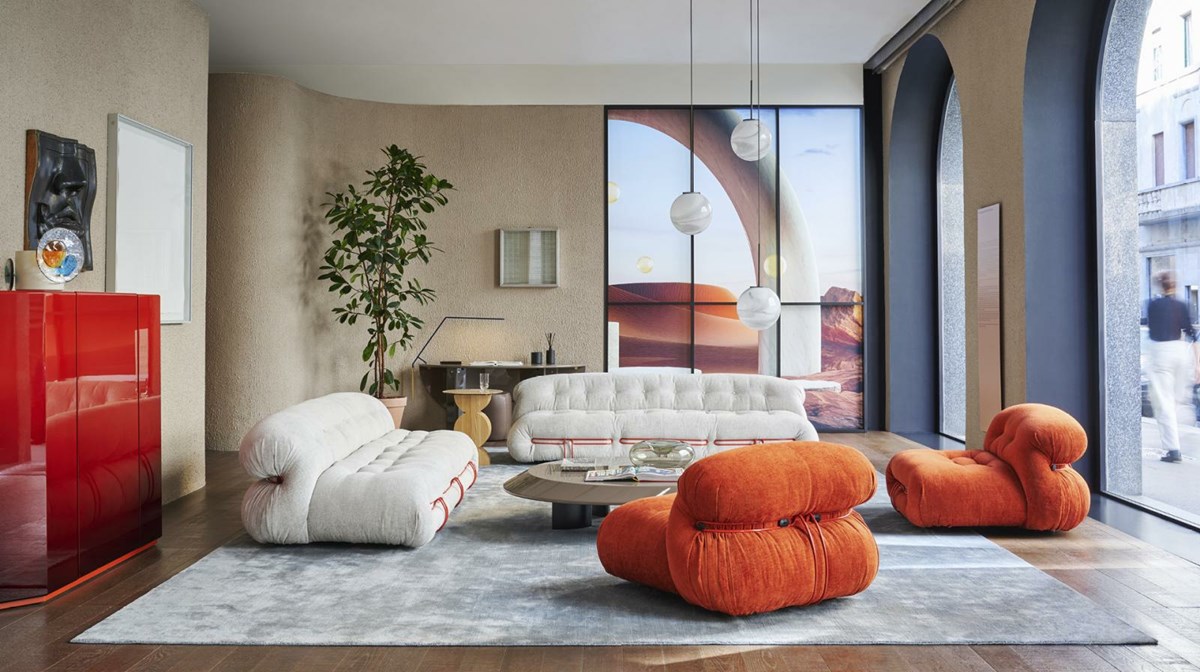Soriana Denim
- Designer:
- Afra & Tobia Scarpa
- Brand:
- Cassina
We don't appear to have any products related to your search term. Please try again.
Shipping and discount codes are added at checkout.








An inviting innovation, the Soriana Armchair is a design with soft, generous contours, designed to bring home casual, sophisticated comfort that opens the door to new, freer lifestyles. The idea for this armchair that changed the face of upholstered furniture belongs to Afra and Tobia Scarpa, who designed it in 1969, starting with the new possibilities offered by the forming of polyurethane foam to create an unconventional look of leisure. With a vise-like grip, the metal structure holds the armchair, with its biodegradable internal padding that, for the first time ever, needs no internal support, intensifying the comfort level of this upholstered chair in the most freeing sense of the word.
An inviting innovation, the Soriana Armchair is a design with soft, generous contours, designed to bring home casual, sophisticated comfort that opens the door to new, freer lifestyles. The idea for this armchair that changed the face of upholstered furniture belongs to Afra and Tobia Scarpa, who designed it in 1969, starting with the new possibilities offered by the forming of polyurethane foam to create an unconventional look of leisure. With a vise-like grip, the metal structure holds the armchair, with its biodegradable internal padding that, for the first time ever, needs no internal support, intensifying the comfort level of this upholstered chair in the most freeing sense of the word.
Designer
Afra and Tobia Scarpa are a distinguished Italian design duo, celebrated for their influential contributions to industrial design, architecture, and furniture.

